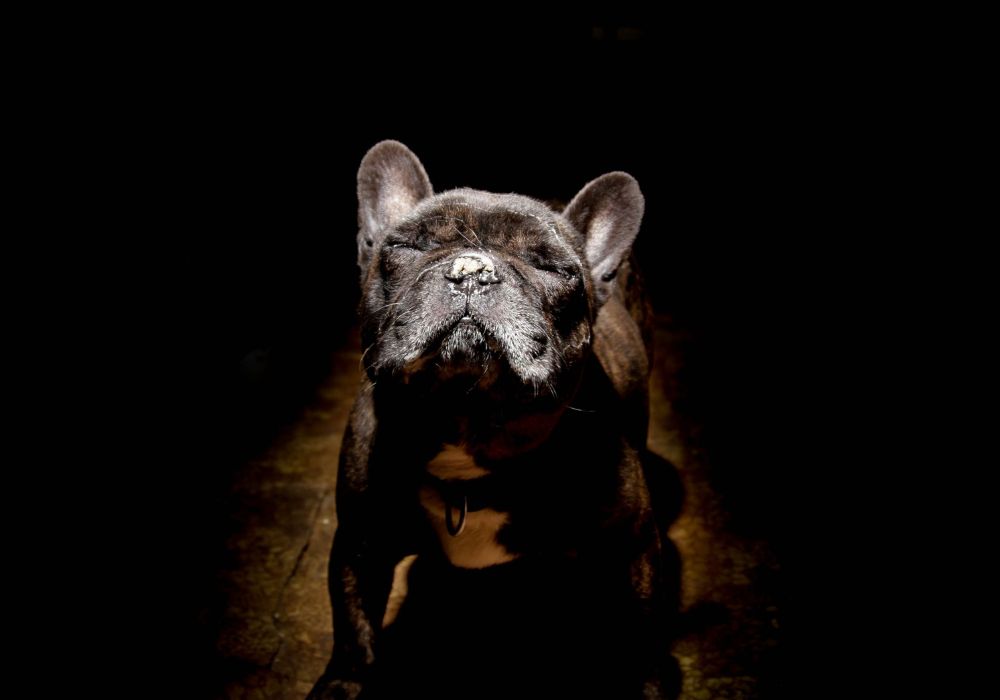Meet the Lancashire Heeler – AKC’s Newest Recognized Dog Breed

Introducing the newest member of the AKC family – the Lancashire Heeler! Don't let its small size fool you. This active dog breed has a rich history as a skilled cattle herder before gaining popularity as a fantastic family companion. Whether out in the fields or at home, this dog is a versatile and delightful companion.
With the AKC recognition, this rare herding gem can now grace the stages of various U.S. dog shows, including the Westminster Kennel Club event. Keep an eye out for this pint-sized powerhouse, as it makes its mark in canine sports and agility contests.
Key Traits of a Lancashire Heeler

- Height - Adult males and females typically stand at 10-12 inches.
- Weight - A Lancashire Heeler dog weighs between 9-17 pounds.
- Lifespan - Their life expectancy ranges from 12 to 15 years and may be influenced by factors like nutrition, care, and genetic conditions.
- Appearance - Lancashire Heelers are small in size with a sturdy build. They sport a short, weather-resistant coat in black and tan or liver and tan.
- Temperament - These dogs are alert and energetic with an affectionate behavior.
What Is the Origin of a Lancashire Heeler?

The Lancashire Heeler traces its roots back to the 17th Century, with its exact origin still unknown. It is widely believed that a type of Welsh Corgi played a role in herding livestock from northern Wales to the Lancashire market. At that time, a black and tan dog, known as the butchers’ dog, was common in the Ormskirk area of West Lancashire. Possible ancestors for this canine companion include the Corgi and Manchester Terrier.
Originally bred for herding cattle and hunting rats, these active and friendly dogs have evolved into cherished family pets over the years. The UK Kennel Club officially recognized the Lancashire Heeler in 1981 and designated it as a vulnerable native breed in 2006.
According to the American Kennel Club, only about 5,000 of these dogs exist worldwide.
Physical Traits of a Lancashire Heeler Dog Breed
A Lancashire dog is characterized by the following physical traits:
- Ears - erect indicating alertness
- Eyes - almond-shaped, medium-sized eyes in dark or light colors
- Head - wide, flat heads that taper slightly
- Coat - dense double coat in either black and tan or liver and tan
- Body - sturdy, short-legged build with a long body
- Tail - tail held skyward with a slight curl

Most Distinguishing Feature of a Lancashire Dog
- Heeler Smile
One distinctive feature that sets this breed apart is their Heeler Smile. Owners observe that when these Heelers are content, they tend to draw back their lips, resembling a human smile.
Behavior and Training Tips for Heeler Dog Breeds
Behavior and Temperament
Lancashire dogs display a medium to high energy level, with a watchful and cautious nature that makes them exceptional herding dogs. At home, the Lancashire Heeler is known for its friendly and affectionate demeanor towards its owners.
Sometimes, Heelers might not warm up to strangers right away and may tend to bark a lot. They usually do well with kids, but like any dog, it's best to keep an eye on them when they're together.
Training

Lancashire Heelers are eager to learn and full of energy. They love any kind of fun activity, and getting yummy treats or a new toy makes training even more exciting. They can be a little independent, though, so be patient but firm when teaching them what to do.
These clever pups were born to work, so giving them a "job" makes them super happy. Whether it's playing fetch, going for regular walks, or even trying out different dog sports, keeping them busy is the key to a happy Heeler.
Best Activities for Lancashire Heelers

- Routine walks
- Hiking
- Play ball
- Swimming and retrieving
- Agility training
- Obedience training
- Canine sports
- Earthdog trials
Caring and Management Tips for Lancashire Dogs
If you are a first-time Heeler owner or thinking of adopting one, here’s what you should know on how to manage them:
-
Diet & Nutrition
Known for their fast metabolism, Lancashire Heelers require a high-quality diet suitable for their age, be it puppy, adult, or senior. Whether you choose commercial dog food or prepare meals at home, keeping an eye on portion sizes is crucial to prevent weight gain.
Due to their small stomachs, these dogs benefit from frequent but controlled meals. While treats are helpful for training, it's essential to use them in moderation to avoid obesity. Familiarize yourself with safe human foods for dogs, and consult your vet for any dietary concerns.
-
Genetic Health Condition
Lancashire Heelers are typically healthy canines. However, like many breeds, they may be prone to certain health conditions. One such condition is Primary Lens Luxation (PLL), an inherited eye disease discovered in 2006. This ailment can lead to the loosening and displacement of the eye lens due to the degeneration of supporting fibers.
To address this concern, responsible breeders and animal health organizations have taken proactive measures to reduce the incidence of PLL.
Recommended Health Tests by the National Breed Club:
- Primary Lens Luxation (PLL)
- Collie Eye Anomaly (CEA, CH)
-
Grooming
Lancashire Heelers are low-maintenance dogs, requiring minimal grooming care.

- Bath and Coat Care - Their short and smooth coat makes grooming relatively easy. Occasional baths and light brushing are sufficient to keep this breed tidy.
- Nail Trim - To prevent overgrowth, splitting, and cracking, trim the nails as needed using a nail clipper or grinder.
- Oral Care - Regular teeth brushing is essential for maintaining good oral hygiene.
- Ear Hygiene - Regularly check the ears to prevent the buildup of wax and debris, which can lead to infections.
-
Exercise
What Type of Pet Owners Will Do Well with Lancashire Heelers?
Before getting a dog, it's essential to understand the responsibilities and commitments involved in pet ownership.
Choosing the right dog breed for your lifestyle is important for a harmonious dog-owner relationship. Lancashire Heelers, with their unique characteristics, are well-suited for certain types of pet owners.
This breed would do well with:
- Active and Athletic Owners
The Lancashire Heeler can be an excellent companion for active individuals without children or families with older children. Those who have prior experience with small, spirited dogs will find the Heeler to be a wonderful addition to their homes.
Ideal owners should possess a good deal of stamina, as these dogs thrive on long, energetic walks. They must also exhibit the calm demeanor necessary to balance out the Heeler's spirited nature. Moreover, effective training skills and experience are essential for socializing and educating this clever little dog.
Best Remote Dog Training E Collars for Lancashire Dogs
If you're planning to buy an e-collar for your Lancashire Heeler puppy, here's a list of the best ecollars for their training:

Some of the most dependable dog training collars are Dogtra shock collars. The 200C is a great remote trainer for beginners. It is one of the best collars for small dogs weighing at least 10 pounds.

The Mini Educator ET-300 is a crowd-favorite trusted by dog owners and trainers. With its sleek design and color options (yellow, black, and the Zen 300), it's as stylish as it is effective. It also comes with the innovative "Pavlovian Tone" training function, along with 100 levels of static stimulation and vibration.

The SD-425X Field Trainer is the lightest and smallest SportDOG brand training e-collar. This is a suitable tool for basic dog training and for developing sporting breeds. This remote dog training collar can be adjusted based on the need and temperament of your dog.
Best No Bark Collars for Lancashire Heelers
Lancashire Heelers may have a tendency to bark, especially on strangers and unfamiliar dogs. If your pup requires bark collar training, here are your top options:
1. E-Collar Technologies BP-504 Barkless Pro Anti-Bark Collar

The BP-504 Barkless Pro Anti-Bark Collar from Educator has an advanced vibration sensor that accurately detects barking. This collar offers 9 levels of stimulation, 3 stimulation modes, and 3 different levels of bark sensitivity.
This dog bark collar also comes with an auto-mode feature that automatically adjusts the stim level based on the barking intensity. A tone-only mode is also available for users who prefer not to use static correction. The collar is waterproof and shock-resistant, ensuring its durability in any weather condition.
2. SportDog NoBark SBC-R No Bark Collar

3. DogWatch-BT-7 No-Bark Trainer No Bark Collar

You might also enjoy...
-
Posted in
E-Collar Info & Guides, Pet Health, Pet Training


